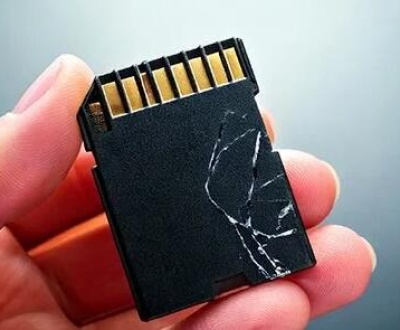1. Using the Undo Function (Shortly After Deletion)
Quickest Method: Immediately after deleting a sheet, you can try using the “Undo” function. In Excel, the “Undo” button is usually located on the Quick Access Toolbar at the top left of the Excel window. It looks like a curved arrow pointing to the left. Press this button (or use the keyboard shortcut Ctrl + Z on Windows or Command + Z on Mac) to reverse the deletion and bring back the sheet. This method works only if you haven’t performed other actions that overwrite the “undo” history.
2. Recover from the Recycle Bin (If Applicable)
Windows:
If your Excel file is stored on a local hard drive (not a network drive or a SharePoint location), and you have the option enabled, the deleted sheet might be in the Recycle Bin. When you delete a worksheet in Excel, it sometimes acts like a file deletion on the operating system level.

To check, open the Recycle Bin on your Windows computer. Look for a file with a name similar to your Excel workbook (usually it has an.xlsx or.xls extension). If you find it, right – click on the file and select “Restore”. Then open the Excel workbook again, and the sheet may be recovered.
However, this method doesn’t always work, especially if Excel doesn’t handle the sheet deletion in a way that the operating system recognizes as a file – like deletion.
Mac: Mac also has a Trash where deleted files are stored. Similar to Windows, if the Excel sheet deletion was treated in a way that the file associated with the workbook was moved to the Trash, you can look for it there. Open the Trash, find the Excel file, and restore it. But again, this depends on how Excel manages the deletion process.
3. Using the “Manage Workbook” Feature in Excel
Excel 2013 and Later:
Click on the “File” tab in the Excel ribbon.
Select “Info”. In the “Info” section, you’ll see a button called “Manage Workbook”. Click on it.
A dropdown menu will appear. Select “Recover Unsaved Workbooks”. Excel will open a dialog box showing any workbooks that were closed without saving or sheets that might have been deleted.
Look for your workbook in the list. If it’s there, select it and click “Open”. Excel will try to recover the workbook to the state it was in before the sheet was deleted. Note that this feature may not always work perfectly, and the recovered workbook might have some data loss or formatting issues.
Earlier Versions of Excel: The steps might be slightly different, but there are usually options to recover previous versions of the workbook. In Excel 2010. for example, you can go to the “File” tab, select “Recent”, and look for an option to recover previous versions.
4. Using Third – Party Data Recovery Tools
Panda Assistant is a state-of-the-art data recovery tool designed to help users recover lost, deleted, or corrupted files effortlessly. Whether you’re dealing with accidentally erased documents, photos, or videos, or facing a more serious issue like a damaged or formatted hard drive, Panda Assistant provides a simple yet powerful solution to restore your files. The software is equipped with advanced scanning technology that ensures a deep and thorough search of your storage devices, including hard drives, USB drives, and SD cards, to recover even the most challenging data.
With its intuitive, user-friendly interface, Panda Assistant is accessible to users of all skill levels. The recovery process is streamlined into easy steps, allowing you to quickly recover your lost files without needing extensive technical knowledge. The software also supports a wide variety of file types, from documents and images to multimedia files, making it versatile enough for any data recovery scenario.
One of Panda Assistant’s standout features is its ability to preview recoverable files before restoration, allowing you to selectively recover only the files you need. This ensures a more efficient recovery process and prevents the restoration of unnecessary data. Additionally, Panda Assistant can help repair damaged files in some cases, further enhancing its utility.
5. Prevention is Better Than Cure – Backup Your Workbooks
Regular Backups: The best way to deal with the situation of a deleted sheet is to prevent it from happening in the first place. Set up a regular backup routine for your Excel workbooks. You can use the built – in backup features of Excel (if available in your version), or you can use external backup software.
For example, in some enterprise – level Excel deployments, administrators can configure automatic backups to a network – attached storage (NAS) or a cloud – based storage solution.
On an individual level, you can simply make copies of your important Excel files to an external hard drive or a cloud storage service like Dropbox, Google Drive, or OneDrive at regular intervals.
Versioning: Some cloud – based storage services and advanced file management systems offer versioning. This means that every time you make changes to a file, a new version is saved. So, if you accidentally delete a sheet, you can go back to a previous version of the workbook where the sheet was still present. For example, Google Sheets has a version history feature that allows you to view and restore previous versions of a spreadsheet.
About us and this blog
Panda Assistant is built on the latest data recovery algorithms, ensuring that no file is too damaged, too lost, or too corrupted to be recovered.
Request a free quote
We believe that data recovery shouldn’t be a daunting task. That’s why we’ve designed Panda Assistant to be as easy to use as it is powerful. With a few clicks, you can initiate a scan, preview recoverable files, and restore your data all within a matter of minutes.
Subscribe to our newsletter!
More from our blog
See all postsRecent Posts
- How to search folder in file explorer 2025-05-09
- How to search for duplicates in file explorer 2025-05-09
- Finder search not finding files 2025-05-09

 Try lt Free
Try lt Free Recovery success rate of up to
Recovery success rate of up to









